
Skate or Die! is a skateboarding video game released by Electronic Arts (EA) in 1987 for the Commodore 64. It is EA's first internally developed game. Versions for the Apple IIGS, MS-DOS, Amstrad CPC, and ZX Spectrum followed. It was ported to the Nintendo Entertainment System by Konami, published under the company's Ultra Games branding.
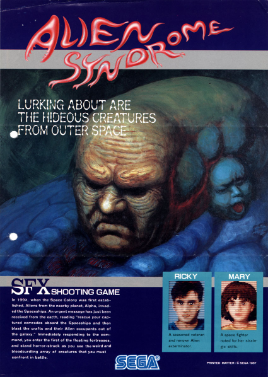
Alien Syndrome is a run and gun video game developed by Sega and released in arcades in 1987, and later ported to the Master System in 1988. The game utilizes a side-scrolling feature that allows the player to take control of either a male (Ricky) or female (Mary) soldier whilst hunting aliens and saving hostages before they run out of time.
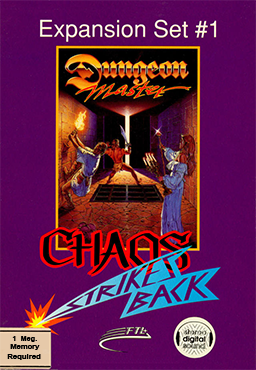
Chaos Strikes Back is an expansion and sequel to Dungeon Master, the earlier 3D role-playing video game. Chaos Strikes Back was released in 1989 and is also available on several platforms. It uses the same engine as Dungeon Master, with new graphics and a new, far more challenging, dungeon.
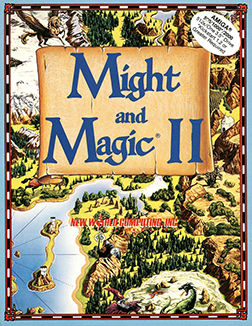
Might and Magic II: Gates to Another World is a role-playing video game developed and published by New World Computing in 1988. It is the sequel to Might and Magic Book One: The Secret of the Inner Sanctum.

Fire Power is a military tank action game developed by Silent Software for the Amiga. It was released in 1987 and published by MicroIllusions and Activision. Ports were released for the Apple IIGS, the Commodore 64 and for MS-DOS in 1988. An Atari Lynx version was planned but development never started due to internal conflict with Epyx.

Fiendish Freddy's Big Top o' Fun is a video game developed by Gray Matter under developer Chris Gray and published in 1990 by Mindscape. It originally appeared on the 16-bit Atari ST, IBM PC and Commodore Amiga, before later being converted to the ZX Spectrum, Commodore 64, Amstrad CPC. The Commodore 64 version was included on cartridge bundled with the Commodore 64 Games System.

Pipe Mania is a puzzle video game developed by The Assembly Line for the Amiga and published in 1989. It was ported to several other platforms by Lucasfilm Games as Pipe Dream; the company distributed the game in the US. The player must connect randomly appearing pieces of pipe on a grid to a given length within a limited time.
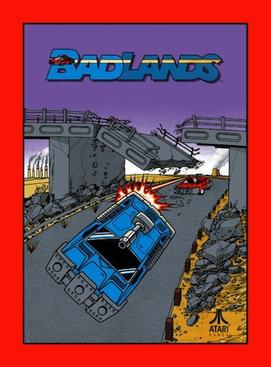
Badlands is a 1989 arcade video game published by Atari Games. It was ported by Domark under the Tengen label to the Amiga, Amstrad CPC, Atari ST, Commodore 64, and ZX Spectrum. The game is a re-themed version of Atari's previous racing games Super Sprint and Championship Sprint with the addition of vehicular combat. Badlands is set in the aftermath of a nuclear war and races around abandoned wastelands with many hazards. Three gun-equipped cars race around a track to win prizes.

Time Bandit is a maze shoot 'em up written for the TRS-80 Model I by Bill Dunlevy and Harry Lafnear and published by MichTron in 1983. It was ported to the TRS-80 Color Computer and Dragon 32, but enjoyed its greatest popularity several years later as an early release for the Atari ST. It was also released for the pseudo-PC-compatible Sanyo MBC-55x with 8-color display. Amiga and MS-DOS versions were ported by Timothy Purves.
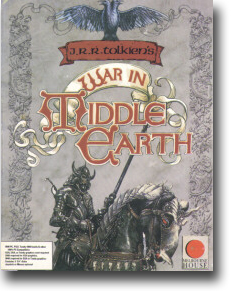
War in Middle Earth is a real-time strategy game released for the ZX Spectrum, MSX, Commodore 64, Amstrad CPC, MS-DOS, Amiga, Apple IIGS, and Atari ST in 1988 by Virgin Mastertronic on the Melbourne House label.

Hostages is a 1988 tactical shooter video game developed and published by Infogrames for the Acorn Electron, Archimedes, Atari ST, Amiga, Apple IIGS, Amstrad CPC, BBC Micro, Commodore 64, MS-DOS, MSX, Nintendo Entertainment System, and ZX Spectrum. The game depicts a terrorist attack and hostage crisis at an embassy in Paris, with the player controlling a six-man GIGN counterterrorist team as they are deployed to defeat the terrorists and free their hostages.

World Tour Golf is a 1986 video game by Evan and Nicky Robinson, Paul Reiche III and published by Electronic Arts for Commodore 64, Amiga, Apple IIGS, and DOS.

Mines of Titan is a single-player role-playing video game, developed by Westwood Associates, and released by Infocom in 1989 for Apple II, Commodore 64 and MS-DOS.

The Kristal is an adventure game first released in 1989 for the Amiga computer. It was later released for the Atari ST and MS-DOS. It was developed by the UK-based company Fissionchip Software, and published in Europe by Addictive Games and in the US by Cinemaware. Unusually for a video game, the game is based on a play, The Kristal of Konos, written in 1976; the authors of the play worked together with the game developers and the play was never shown in theatres or on film before the game's release. A dialog introducing the setting recorded by Patrick Moore, who introduced both the game and play.

Sword of Sodan is a hack and slash video game released for the Amiga in 1988 by Discovery Software, which also commissioned a port for the Apple IIGS. A scaled-down version for the Sega Genesis was released in 1990 by Electronic Arts, and in 1993 it was released for the Apple Macintosh System 7 by Bethesda Softworks.

Cosmic Causeway is the sequel to the video game Trailblazer written by Shaun Southern. While the original game featured a split-screen two player mode, the sequel is single-player only. The display is a full screen 3D view of the "road" ahead. Another major change is the addition of tunnels, with the player able to roll along upside down if the necessary icon has been selected.

Variations of golf include methods of scoring, starting procedures, playing formats, golf games, and activities based on or similar to the sport of golf which involve golf-like skills or goals.

Dream Zone is an adventure game developed by JAM Software and published by Baudville. It was released in 1988 for the Apple II and Apple IIGS, followed by versions for MS-DOS, the Amiga, and the Atari ST.

Jack Nicklaus' Greatest 18 Holes of Major Championship Golf is a golf-simulation video game developed by Sculptured Software, and published by Accolade beginning in 1988. It was released for the Amiga, Amstrad CPC, Apple IIGS, Atari ST, Commodore 64 (C64), MS-DOS, Macintosh, MSX, Nintendo Entertainment System (NES), PC-88, Sharp X68000, and Game Boy.

TV Sports: Football is a 1988 video game by Cinemaware for Amiga, Atari ST, Commodore 64, DOS, and TurboGrafx-16.





















